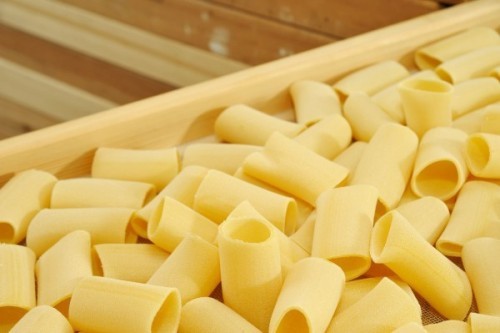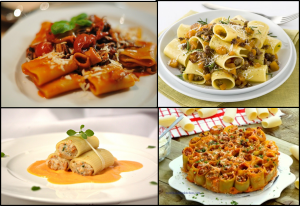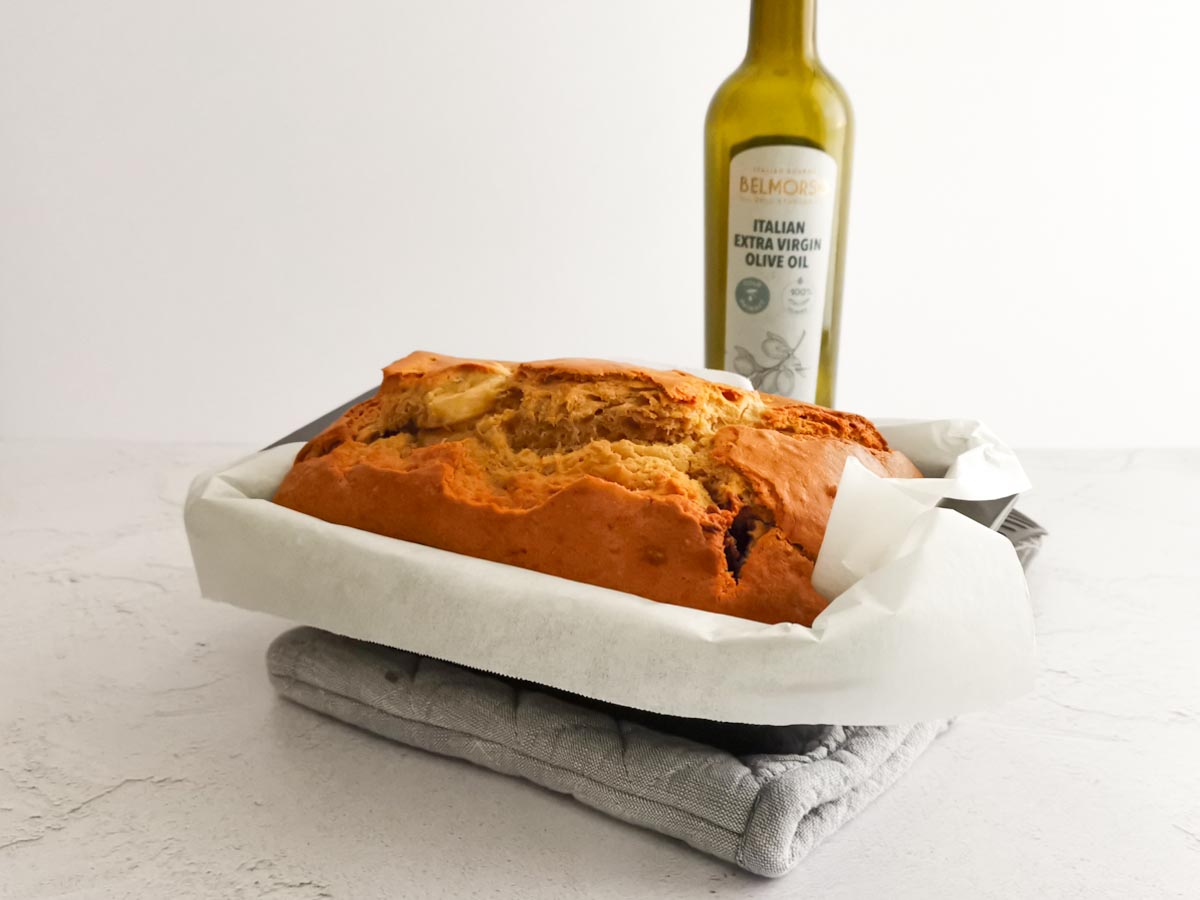
The Pasta Teller: Chapter 4 – Paccheri
The Paccheri is a traditional kind of pasta from Naples, shaped as giant maccheroni, usually made with durum wheat and water.
Origins
Once upon a time, it was known as the “pasta of the poor” because they are so big that just a few paccheri were enough to fill your tummy.
The origin of the name comes from the ancient Greek: “πας” (whole) e “χειρ” (hand) and in the dialect of Naples it means “slap”. The reason is that if you throw the pasta from the pot to the plate it makes a sound similar to a backhand due to its dimension.
Production
Paccheri have usually a smooth surface, even if it exists also the scratched (“rigate”) version, obtained through the brass wire-drawing of the dough.
One of the most famous places where is produced is Gragnano. This region has been producing pasta since the beginning of the 18th century using the best flour and the local water of the Lattari Mountains. The wire-drawing is made exclusively with brass tools. This procedure helps the pasta to better absorb the sauce. The drying process can take up to 36 hours with a temperature of around 36 degrees, this helps the pasta to maintain its characteristic light yellow colour, the flavour and its beneficial properties.
Nowadays, Paccheri pasta is still considered a special type of pasta because it can be difficult to find them in the supermarket.
How to use it?
The shape of this pasta suit perfectly with a sauce of tomato and bolognese. It is also delicious combined with seafood. Try it filled with ricotta and spinach, vegetables, meat, or any of your favourite ingredients and baked in the oven with cheese on the top… Irresistible!






